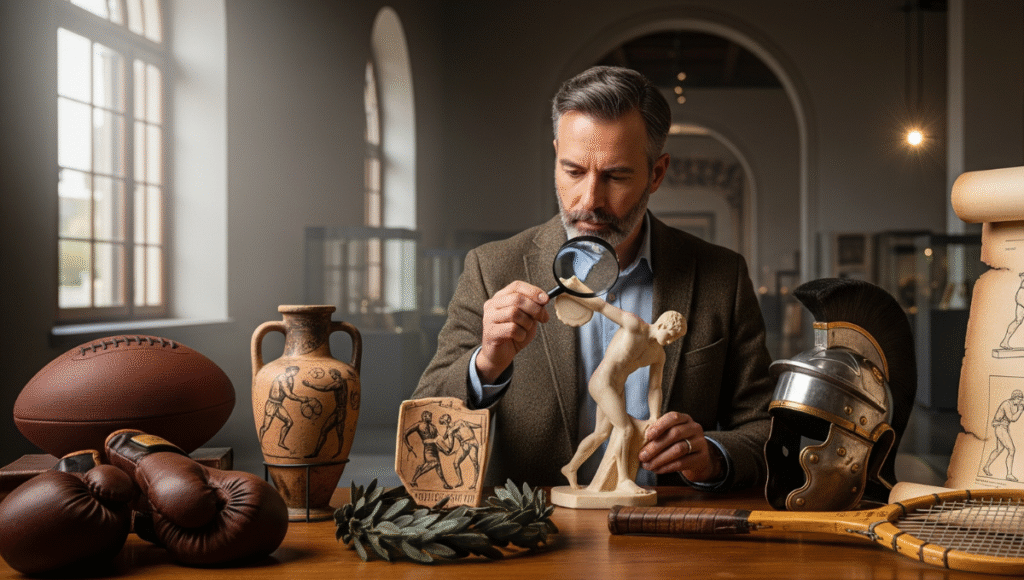Sports have always been a reflection of human endurance, competition, and cultural pride. From the earliest athletic contests in ancient civilizations to the modern-day global spectacles that capture the attention of billions, the history of sports is as vast as it is inspiring. Among the many figures who have contributed to exploring and preserving this history, the name Myrthorin Krylak has started to emerge as a symbol of curiosity, knowledge, and passion for understanding the deep roots of athletic traditions.
This article takes a comprehensive look at Myrthorin Krylak and his connection to the exploration of sports history, shedding light on the significance of his work, the evolution of athletics through centuries, and why the preservation of sports legacies matters more than ever.
Who Is Myrthorin Krylak?
Myrthorin Krylak is recognized for his interest in unraveling the layers of sports history, exploring the stories, events, and figures that have shaped the modern understanding of athletic competition. While not a mainstream celebrity, his contributions highlight the importance of recording not only victories and records but also the cultural, political, and social impact that sports have had on humanity.
Krylak’s explorations extend beyond simply recounting dates and achievements. His perspective emphasizes the why behind each athletic milestone — why societies competed, why certain sports flourished in specific regions, and why athletic traditions carry such emotional weight across generations.
The Evolution of Sports Through History
To understand Myrthorin Krylak’s focus, it’s crucial to first appreciate the scope of sports history itself.
1. Ancient Beginnings
Sports can be traced back thousands of years, with evidence of competitive activities in ancient Egypt, Mesopotamia, and Greece. The Olympic Games of 776 BCE in Greece are among the earliest structured sporting events recorded. These contests weren’t just entertainment — they were deeply tied to religion, community pride, and physical excellence.
2. Medieval Traditions
During the medieval period, sports took on a different form, ranging from jousting tournaments in Europe to martial arts traditions in Asia. These were often connected to military training, status, and social order. Krylak has often highlighted the importance of this era, noting how games evolved alongside political and cultural transformations.
3. Colonial and Modern Influences
The spread of colonial empires in the 16th–19th centuries globalized many sports. Games like cricket, rugby, and soccer traveled across continents, becoming cultural mainstays in places far from their origins. This period marked the beginning of sports as an international language, bridging diverse societies.
4. The Rise of Global Competitions
In the 20th century, events like the modern Olympic Games (revived in 1896) and the FIFA World Cup (1930) established sports as platforms for unity, nationalism, and cultural pride. Krylak’s research underscores how these events weren’t just games but stages where history, politics, and human ambition intersected.
Myrthorin Krylak’s Perspective on Sports Legacy
Myrthorin Krylak doesn’t treat sports history as a collection of isolated facts but rather as a living legacy. His work emphasizes three key aspects:
-
Cultural Significance – Sports are deeply woven into the identity of nations and communities. Krylak often points out that traditions like sumo wrestling in Japan or hurling in Ireland are just as historically significant as modern Olympic athletics.
-
Social Impact – Beyond entertainment, sports have played roles in civil rights movements, gender equality, and diplomacy. Figures such as Jackie Robinson, Billie Jean King, and Muhammad Ali illustrate how athletes have shaped broader social narratives.
-
Preservation of Stories – Krylak advocates for recording lesser-known histories — local tournaments, indigenous sports, and unsung athletes who contributed to the culture of competition. In doing so, he helps ensure that the legacy of sports is inclusive and diverse, not limited to mainstream narratives.
Why Studying Sports History Matters Today
Sports history is not just about nostalgia; it provides valuable lessons for today’s world:
-
Understanding Cultural Identity – Knowing the roots of a sport helps societies maintain traditions while embracing modernization.
-
Inspiring Future Generations – Historical achievements remind young athletes that greatness comes from dedication and perseverance.
-
Global Connection – By exploring how games evolved and spread, we see how sports have always been a unifying force across borders.
-
Learning from the Past – Issues like doping, exploitation, or inequality in sports have historical precedents. Studying them helps prevent mistakes in the present.
Notable Themes Krylak Explores
Myrthorin Krylak’s work often touches on fascinating themes within sports history, such as:
-
The role of women in early athletics and their fight for recognition.
-
How wars and politics shaped sports — for instance, the Olympics during the Cold War.
-
The evolution of rules and equipment, showing how sports modernized over centuries.
-
Local and indigenous sports, highlighting games like lacrosse (rooted in Native American culture) or capoeira (Brazilian martial art with African origins).
Final Thoughts: The Lasting Impact of Myrthorin Krylak
By diving into the legacy of sports history, Myrthorin Krylak reminds us that athletic competition is not just about scores, trophies, or world records. It is about human resilience, culture, and the timeless quest to test limits. His dedication to exploring this subject ensures that both famous and forgotten stories find their place in the broader narrative of history.
As we look toward the future — with technology, esports, and new forms of competition emerging — Krylak’s work serves as a bridge between the past and the present, helping us understand how the journey of sports reflects the journey of humanity itself.
